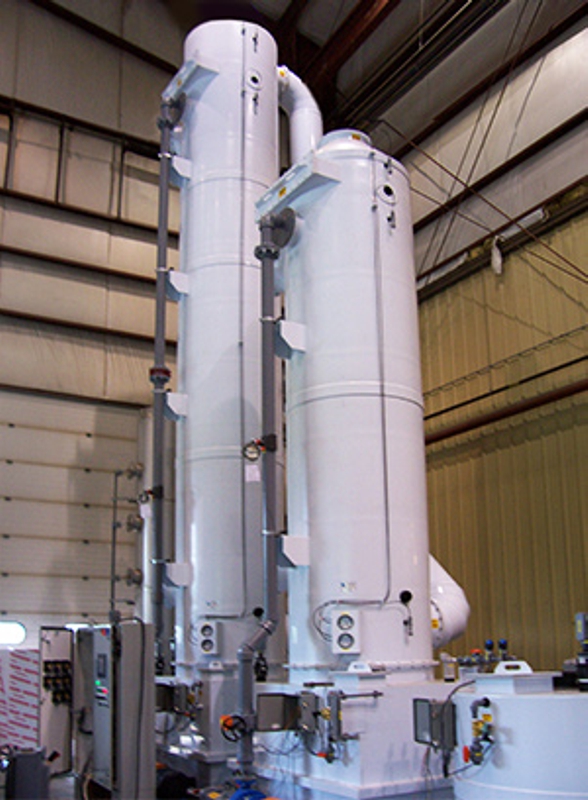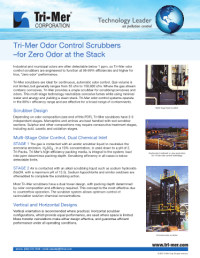Odour Control Scrubbers
Tri-Mer odour scrubbers yield zero odour at the stack
Tri-Mer Odour Control Scrubbers
Tri-Mer odour control scrubbers are engineered to function at 98-99% efficiencies and higher for true, “zero odour” performance. Tri-Mer scrubbers are ideal for continuous, automatic odour control. Gas volume is not limited, but generally ranges from 35 cfm to 150,000 cfm..
Applications
Applications include chemical plants, petrochemical facilities, municipal waste treatment, asphalt manufacturing, foundries and food processing.
Multi-Stage Scrubbing
The Tri-Mer odour control scrubbers are designed in multiple stages to handle differing chemical gas inputs, including corrosive gasses like H2SO4 or ammonia. Most Tri-Mer scrubbers have a dual tower design, with packing depth determined by odour composition and efficiency required. This is most effective due to counter-flow operation. The scrubber system allows optimum control of recirculation solution chemical concentrations.
Many Tri-Mer systems have a dual tower design, with packing depth determined by odour composition and the efficiency required. This engineering concept is the most efficient due to counterflow operation. The system allows optimum control of recirculation solution chemical concentrations. The Crossflow design is ideal for situations with dimensional constraints.

Industrial Odour Control Guarantee
Tri-Mer odour control scrubbers are guaranteed to reduce odors from onion and meat cooking processes. Performance against specific compounds which testing has identified as being present in measurable quantities and which are known to have offensive odours are outlined below:
Hydrogen sulphide: For inlet concentrations up to 4000 ppb, the concentration at the outlet or the odour control system will be less than 1 ppb. This is the lowest reported odour concentration.
Methyl mercaptan: For inlet concentrations up to 100 ppb, the concentration at the outlet for the odour control system will be less than 0.05 ppb, within the range of reported odour threshold concentrations.
Dimethyl sulphide: For inlet concentrations up to 1000 ppb, the concentration at the outlet for the odour control system will be less than 0.3 ppb. This is the lowest reported odour threshold concentration.
Carbon disulphide: For inlet concentrations up to 100 ppb, the concentration at the outlet for the odour control system will be less than 16 ppb, the lowest reported odour threshold concentration.
n-Propyl mercaptan: For inlet concentrations up to 2200 ppb, the concentration at the outlet for the odour control system will be less than 5 ppb.


